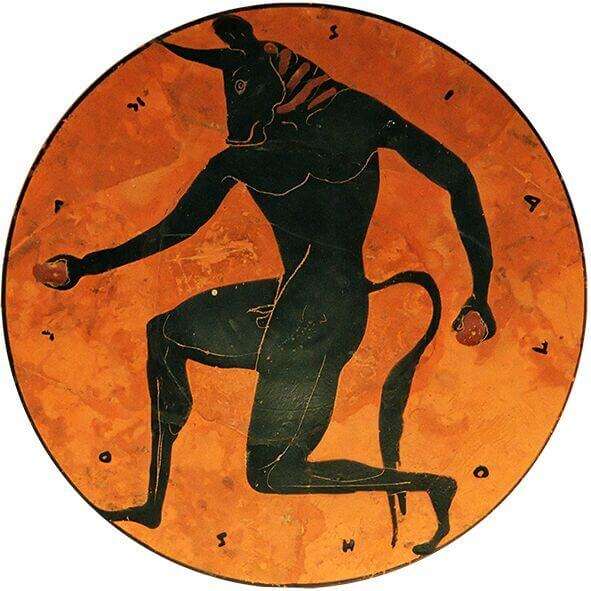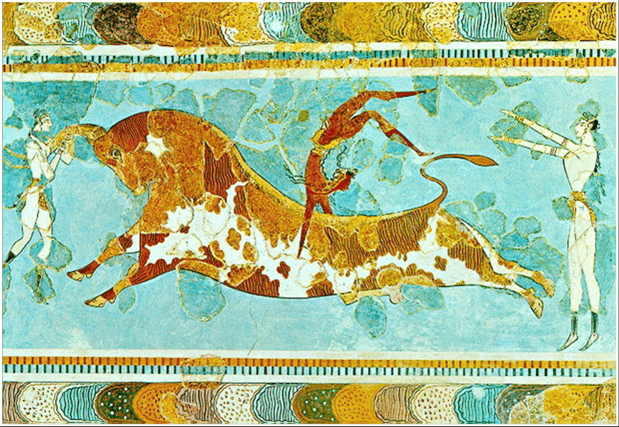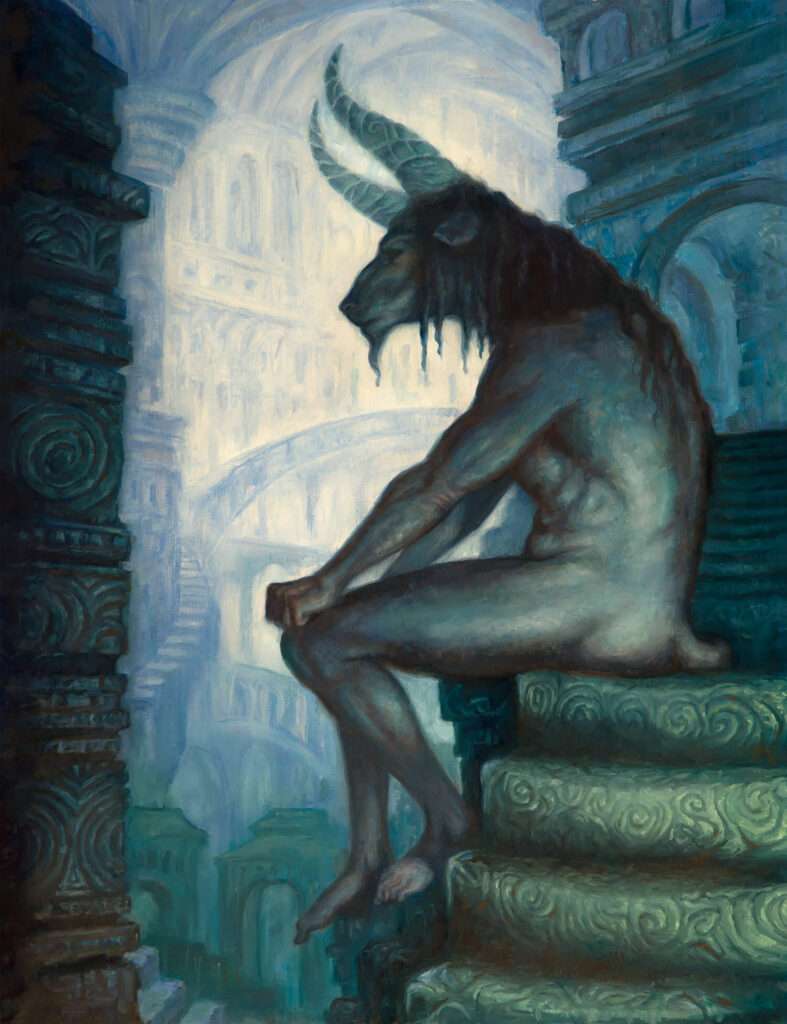In the labyrinthine annals of Greek mythology, the Minotaur emerges as a creature of both awe and mystery, a significant figure embodying the fusion of human intellect and bestial strength. This mythical creature, with the body of a man and the head of a bull, has captivated imaginations for centuries, symbolizing the intricate dance between civilization and savagery, human ingenuity and primal instincts. The essence of this article lies in unraveling the multifaceted layers of the Minotaur myth, aiming to provide a comprehensive, accurate, and insightful analysis. Delving deep into the mythos, we explore not just the well-trodden paths of its narrative but also the less explored alleys of its symbolism, cultural impact, and its enduring legacy in modern times. By dissecting the myth from various angles – historical, cultural, psychological, and artistic – this article seeks to offer readers a rich, multi-dimensional understanding of one of Greek mythology’s most intriguing creatures.
| Origin | Greek Mythology |
| Classification | Mythical Creature |
| Appearance | Human body with the head of a bull |
| Location | Labyrinth in Crete |
| Story | Son of Pasiphaë (Queen of Crete) and the Cretan Bull; Confined to the Labyrinth; Slain by Theseus |
| Associated with | Myth of the Labyrinth, Theseus and the Minotaur, Symbol of Crete |
1. Historical Context
Origins of the Myth
The Minotaur’s tale, a blend of the human and the divine, finds its roots in the earliest annals of Greek literature and art. It first appears in classical sources like Ovid’s “Metamorphoses” and the Athenian epics, where the myth is more than just a story – it’s a reflection of the complex Greek psyche. In art, the Minotaur frequently appears on pottery and frescoes, symbolizing its deep-seated presence in Greek cultural consciousness.

Cultural Significance
In the pantheon of Greek mythology, the Minotaur is not just a creature of legend, but a representation of fundamental Greek themes: the conflict between human intelligence and animalistic instinct, and the thin line between civilization and barbarism. Its recurring depiction in religious ceremonies and artistic expressions underlines its integral role in shaping the Greek understanding of morality, heroism, and the divine.
2. The Myth of the Minotaur
Birth and Nature
At the heart of the Minotaur myth lies its bizarre birth story, a narrative steeped in divine intervention and human folly. Born to Pasiphae, wife of King Minos of Crete, and a majestic bull sent by Poseidon, the Minotaur embodies the consequences of defiance against the gods. This union, resulting in a creature both feared and pitied, sets the stage for a story that intertwines human desires with divine retribution.

The Labyrinth
Central to the Minotaur’s legend is the Labyrinth, an architectural marvel designed by the ingenious Daedalus. More than a mere prison for the beast, the Labyrinth represents the complexity of human emotions and intellect, a maze not just of walls and paths but of moral choices and existential dilemmas.
Theseus and the Minotaur
The story reaches its crescendo with the arrival of Theseus, the Athenian prince. His journey to Crete, driven by courage and a quest for justice, and his eventual confrontation with the Minotaur, is a tale of bravery, cunning, and the triumph of human will over monstrous adversity.

Symbolism and Interpretation
The Minotaur’s symbolism in Greek mythology is layered and diverse. It has been interpreted as a manifestation of internal struggle, a symbol of political power, and even as a metaphor for societal outcasts. Each interpretation offers a unique lens through which to view not only the myth but also the cultural and psychological landscape of ancient Greece.
3. Archaeological and Literary Evidence
Minoan Civilization
The roots of the Minotaur myth intertwine intriguingly with the archaeological remnants of the Minoan civilization, the earliest known civilization in Europe, centered on the island of Crete. Excavations at sites like Knossos have unearthed palatial complexes, which some historians and archaeologists speculate could have been the inspiration for the legendary Labyrinth. The discovery of frescoes depicting bulls and bull-leaping rituals suggest a societal fascination with bulls, possibly fueling the mythological narrative. These archaeological findings not only provide a tangible backdrop to the mythical labyrinth but also hint at the cultural and religious significance of bulls in Minoan society, potentially laying the groundwork for the birth of the Minotaur myth.

Literary Sources
The Minotaur’s tale is richly documented in classical literature, with two primary sources being Ovid’s “Metamorphoses” and Plutarch’s “Life of Theseus”. Ovid’s narrative provides a vivid, poetic account of the Minotaur’s birth and the anguish of Pasiphae, offering a lens into the Roman perspective on Greek myths. Plutarch, on the other hand, presents a more historical and philosophical view in “Life of Theseus”, delving into the hero’s character and the moral implications of his actions. These texts are invaluable for understanding the evolution of the Minotaur myth through different cultural lenses and times, illustrating the enduring allure and adaptability of this ancient story.
4. Modern Influence and Legacy
Art and Literature
The Minotaur, transcending the boundaries of its mythic origins, has etched a formidable presence in modern art, literature, and popular culture. In literature, it has been reimagined in works ranging from Mary Renault’s historical novels to Jorge Luis Borges’ philosophical explorations, each offering a new dimension to the myth. In art, the Minotaur has been a subject of fascination for artists like Pablo Picasso, who used its imagery to explore themes of conflict and identity. Furthermore, its influence extends to popular culture, where it appears in films, video games, and television, often symbolizing the complex interplay between humanity and monstrosity. This enduring appeal reflects not just the versatility of the Minotaur myth but also its ability to resonate with contemporary themes of hybridity, identity, and the human condition.

Psychological Interpretations
In the realm of psychology, particularly in Jungian analysis, the Minotaur takes on a profound symbolic role. Representing the ‘shadow’ aspect in Jungian terms, the Minotaur embodies the repressed, darker parts of the human psyche that are often difficult to confront. It is seen as a metaphor for inner conflicts, the primal instincts, and the parts of the self that society compels individuals to hide. This psychological perspective offers a deeper understanding of the Minotaur’s enduring relevance, suggesting that the labyrinth is not just a physical maze but also a metaphor for the complex journey of self-exploration and acceptance of one’s innermost fears and desires.
5. Conclusion
In conclusion, the Minotaur, a seminal figure in Greek mythology, encapsulates a multitude of dimensions – from its mythological birth and the enigmatic Labyrinth to its profound cultural and psychological implications. Archaeological findings from the Minoan civilization offer tantalizing clues to the myth’s origins, while classical literary works by Ovid and Plutarch provide rich narrative tapestries that have shaped our understanding of this legend. In modern times, the Minotaur continues to exert its influence, inspiring diverse interpretations in art, literature, and psychology, particularly in the realms of Jungian analysis, where it symbolizes the complex facets of the human psyche. This exploration underscores the Minotaur’s timeless appeal, demonstrating its capacity to resonate across eras, cultures, and disciplines. The Minotaur’s story, rooted in ancient mythology, continues to navigate the labyrinth of human experience, reflecting our ongoing quest to understand the intricate interplay between our civilized selves and the primal, untamed forces within.
